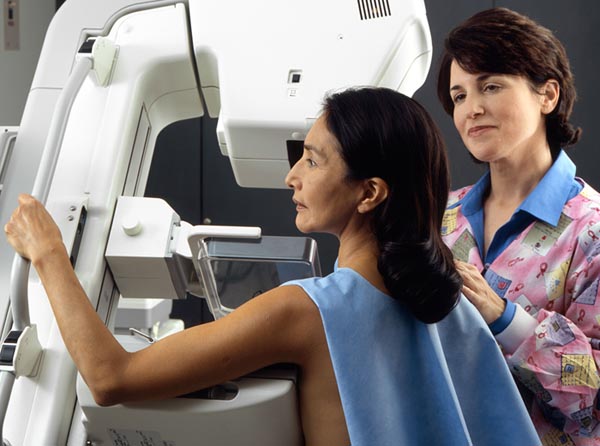Breast Cancer Screening is one of the most important things that a women can do, because most instances of breast cancer are preventable and treatable if the disease is caught in the early stages.
There are a couple of types of breast cancer screening, the first that you can do yourself at home, involves feeling the breasts for any lumps that may be present. The other type of breast cancer screening is the type that is conducted by your physician or by another medical professional. There are many places that offer breast cancer screenings, some even without cost.

The Self Breast Exam
The first thing about examining yourself for breast cancer is already being aware of your body. You should already know the size, shape and coloration of your breasts so that you can notice when there are any changes. Some of the common signs of breast cancer can include swelling of the breast and a red color, as well as dimpling and puckering or a rash present. Other signs might include a watery discharge from the nipple that is milky, yellow or bloody. Next, feel the breasts for any abnormalities. Do this exam lying down, and use your fingertip pads to feel for any lumps, or anything that shouldn’t be there.
Besides checking the breasts themselves, you should also check under your armpits. You will use the same technique that you used for the breasts, feeling the right armpit with the left, and vice versa, and check for lumps, firm spots or any spots on the tissue that feel thicker than the others. Do it with your arms only raised part of the way up however, as the tightening of the tissue may make the lumps harder to detect. Obviously, if you find something, you should set an appointment right away with your doctor, but don’t panic, as many of these abnormalities aren’t actually breast cancer at all.
Breast Cancer Screening by a Physician
The other type of breast cancer screening is done by a physician. Although the screening of women without any symptoms of breast cancer is somewhat controversial, because the process causes a great number of false positive results, detecting breast cancer in its earliest stages can result in a one hundred percent survival rate. There are a number of screening tests that have been designed to detect breast cancer including exams similar to the self-examination by a doctor, mammograms and of course having the symptoms of breast cancer.
Clinical breast examinations by a heath care provider were once recommended by everyone, but the issue has become somewhat muddied with the controversy, and now most experts agree that breast exams in women that are asymptomatic (showing no symptoms) and do not have high risk factors for breast cancer such as a family history or other risks, may do more harm than good, with benign lesions being misidentified as breast cancer and the patient undergoing a biopsy that wasn’t necessary. In fact, a 2003 study called the Cochrane Review did not recommend self exams or physician exams.
Another common method for screening breast cancer is called a mammogram, or mammography. This method uses radiation to check the breasts, and it is widely available in the United States and other developed countries. It is a relatively fast examination, but it also suffers from its own controversy. Mammograms detect breast cancer that is made up of smaller tumors that are less aggressive and has a hard time picking up the cancer in the more later stages where the cancer is in the more dense part of the breast, because it cannot image that far down.
Home Page: Breast Cancer Symptoms